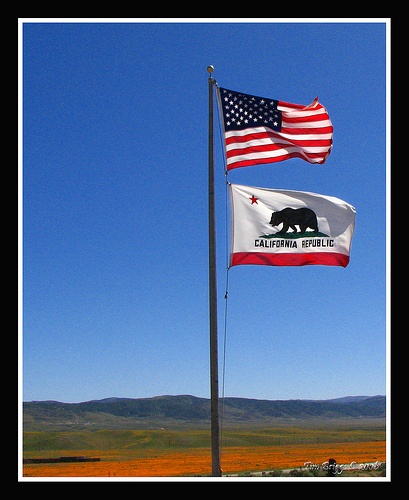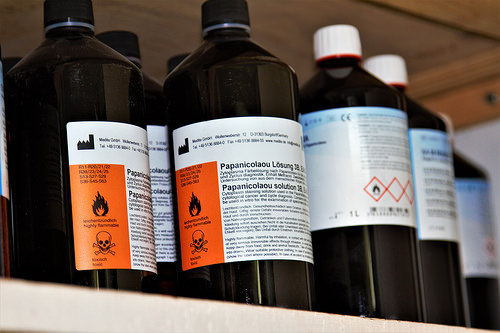On September 27, 2024, California’s governor Gavin Newsom signed Senate Bill (SB) 219, amending greenhouse gas (GHG) emission reporting requirements for targeted organizations doing business in the state, enacted in 2023 (SB 253 (Wiener) (Climate Corporate Data Accountability Act) and SB 261 (Stern)) and initially scheduled to require compliance beginning January 1, 2025. (I wrote about them HERE) SB 219 revises and delays emissions reporting requirements. The revised requirements will still be administered by the California Air Resources Board (ARB), expanding its longstanding air quality and climate authority (GHG provisions center on the Global Warming Solutions Act of 2006 ((AB 32)). The remainder of this note discusses the revisions made by SB 219.
Audit, Compliance and Risk Blog
California revises greenhouse gas emission and financial risk reporting laws
Posted by Jon Elliott on Tue, Nov 12, 2024
Tags: California Legislation, Environmental risks, Environmental, Greenhouse Gas, Environmental Projects, California, Environment, Environmental Policy
Feds Issue Nationwide Motor Vehicle Greenhouse Gas Standards and Declare California’s Standards to be Preempted
Posted by Jon Elliott on Tue, Oct 22, 2019
The federal government has taken another step in its car wars with California. Late in September the Environmental Protection Agency (EPA) and the National Highway Traffic Safety Administration (NHTSA) issued joint rules declaring NHTSA’s preemptive authority to set national standards covering greenhouse gas (GHG) emissions from petroleum-fueled vehicles and electric vehicles, and revoking a waiver from EPA that lets California set such standards.
Read MoreTags: California Legislation, Environmental risks, Environmental, EPA, ghg, Transportation, greenhouse
Motor Vehicle Greenhouse Gas Standards–California and Four Manufacturers Finesse the Turf War With the Federal Government
Posted by Jon Elliott on Tue, Aug 20, 2019
Since the Trump Administration reversed the federal government’s agreement with California for joint motor vehicle greenhouse gas (GHG) standards, federal and state agencies have moved steadily to assert their respective authorities and to sue their counterparts. However, on July 25, 2019 California and 4 major vehicle manufacturers announced a voluntary agreement that eases the state requirements somewhat while making the looser federal standards irrelevant for those companies – and for any additional manufacturers that might join later.
Read MoreTags: Business & Legal, California Legislation, Environmental risks, Environmental, Greenhouse Gas, ghg
Although workplace air quality concerns usually focus on contaminants produced by workplace activities, this summer’s wildfire season provides a reminder that unsafe workplace air may also enter from outside and offsite. On July 18, California’s Occupational Safety and Health Standards Board adopted an emergency rule (8 CCR 5141.1) requiring worker protection from wildfire-produced bad air, which the state’s Division of Occupational Safety and Health (Cal/OSHA) began to enforce effective July 29. In California, you should prepare to comply; if you work someplace else but could be affected by wildfires then this rule provides a useful basis for approaching the issue.
Read MoreTags: Health & Safety, OSHA, Employee Rights, California Legislation, Environmental risks, Environmental, EPA
California Proposes Universal Wastes Rules For Photovoltaics
Posted by Jon Elliott on Tue, Jun 11, 2019
The Resource Conservation and Recovery Act (RCRA) assigns the US Environmental Protection Agency (EPA) and state hazardous waste agencies regulate “hazardous wastes,” including categories defined as “universal wastes” that are subject to reduced management requirements. EPA defines five categories, but also allows states to define additional categories (I wrote about this here). California’s Department of Toxic Substances Control (DTSC) has just proposed to add a new category of state-regulated universal waste covering “photovoltaic [PV] modules” to its regulations under the state’s Hazardous Waste Control Law (HWCL). The remainder of today’s blog summarizes these proposed universal waste PV requirements.
Read MoreTags: California Legislation, Environmental risks, Environmental, EHS, EPA, Hazcom, RCRA
California Requires Pharmaceutical and Sharps Waste Stewardship
Posted by Jon Elliott on Tue, Jan 29, 2019
Beginning January 1, 2019, a new California law establishes extensive requirements for proper management of waste pharmaceuticals and “sharps.” These new provisions complement – but aren’t actually well-connected to -- medical waste management requirements (I outlined typical state-based requirements here), and workplace provisions to protect workers from “bloodborne pathogens” that may be present because of health and medical procedures and the wastes they generate (I discussed OSHA’s “BBP” Standard here). The rest of this note summarizes these new requirements, adopted by Senate Bill (SB) 212 (Jackson).
Read MoreTags: Health & Safety, California Legislation, Environmental risks, Environmental, Hazcom, pharmaceuticals
California Returns Statewide Greenhouse Gas Emissions to 1990 Levels
Posted by Jon Elliott on Tue, Sep 04, 2018
California is one of many jurisdictions around the planet attempting to reduce greenhouse gas (GHG) emissions to 1990 levels. Globally, this goal appears in the United Nations Framework Convention on Climate Change (UNFCCC) – signed in 1992 when the 1990 goal translated roughly into a goal to keep GHG emissions flat. California adopted its own 1990 goal in “AB 32” legislation enacted in 2006, by which time annual statewide emissions had increased significantly, and when business-as-usual emissions growth was projected to continue. As later quantified by the California Air Resources Board (ARB), AB 32 amounted to a commitment to reverse the state’s path, reducing GHG emissions by 15% instead of allowing them to rise by 15%. In July, ARB announced that the state has reached this 2020 goal, two years early.
Read MoreTags: California Legislation, Environmental risks, Environmental, Greenhouse Gas, ghg
California Adopts Plan for Greenhouse Gas Controls Through 2030
Posted by Jon Elliott on Tue, Feb 27, 2018
Since enacting AB 32 in 2006, California has pursued aggressive policies to reduce statewide greenhouse gas (GHG) emissions. Primary responsibilities are assigned to the California Air Resources Board (ARB), although other state agencies implement complementary policies within their areas of special jurisdiction. In addition to emissions control regulations, state law assigns ARB to develop a Scoping Plan that identifies the state’s strategic goals, and compiles the many tactical approaches through individual regulatory and incentive programs. ARB issued the first Scoping Plan in 2008, with an update in 2014 and the latest update in 2017. The rest of this note describes changes in the latest Scoping Plan to reflect the state’s ever-expanding GHG reduction goals.
Read MoreTags: Health & Safety, California Legislation, Environmental risks, Environmental, Greenhouse Gas, ghg
One of California’s longstanding amplifications of national environmental health and safety (EH&S) programs is provided by “Proposition 65.” I summarized these provisions here. As I described, the main thrust of this 1986 state enactment is to provide warnings about potentially hazardous chemicals, to customers, workers, and other “potentially exposed individuals." Prop 65 provides sample texts for warnings, including “safe harbor” text for product labels and in-store signage. After 30 years, the state is revising these safe harbors to be more informative. Revised safe harbor text became available for use August 30, 2016 and replace their expiring predecessors on August 30, 2018. Since we’re half way through this two year transition, it’s a good time to review.
Read MoreTags: Health & Safety, OSHA, California Legislation, Environmental risks, Environmental, Hazcom
What’s In Your Janitor’s Closet? New York Seeks More Information
Posted by Jon Elliott on Tue, Aug 22, 2017
Even workplaces with very limited chemical use probably use cleaning supplies. If these supplies are bought in typical retail packaging intended for consumer use, the employer and employees may lack ready access to chemical content information beyond that on the labels. That’s because the Hazard Communication Standard (Hazcom) administered by the U.S. Occupational Safety and Health Administration (OSHA) exempts consumer products in their final form for consumer use, unless worker use is greater than that by typical consumers.
Read MoreTags: Health & Safety, OSHA, California Legislation, Environmental risks, Environmental, EHS, Hazcom










